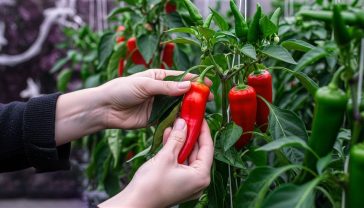The Guide to Lavender: A Hardy Hero for British Gardens
Discover the secrets to growing and using lavender in the UK. From Roman roots to modern gardening, this is your ultimate guide.
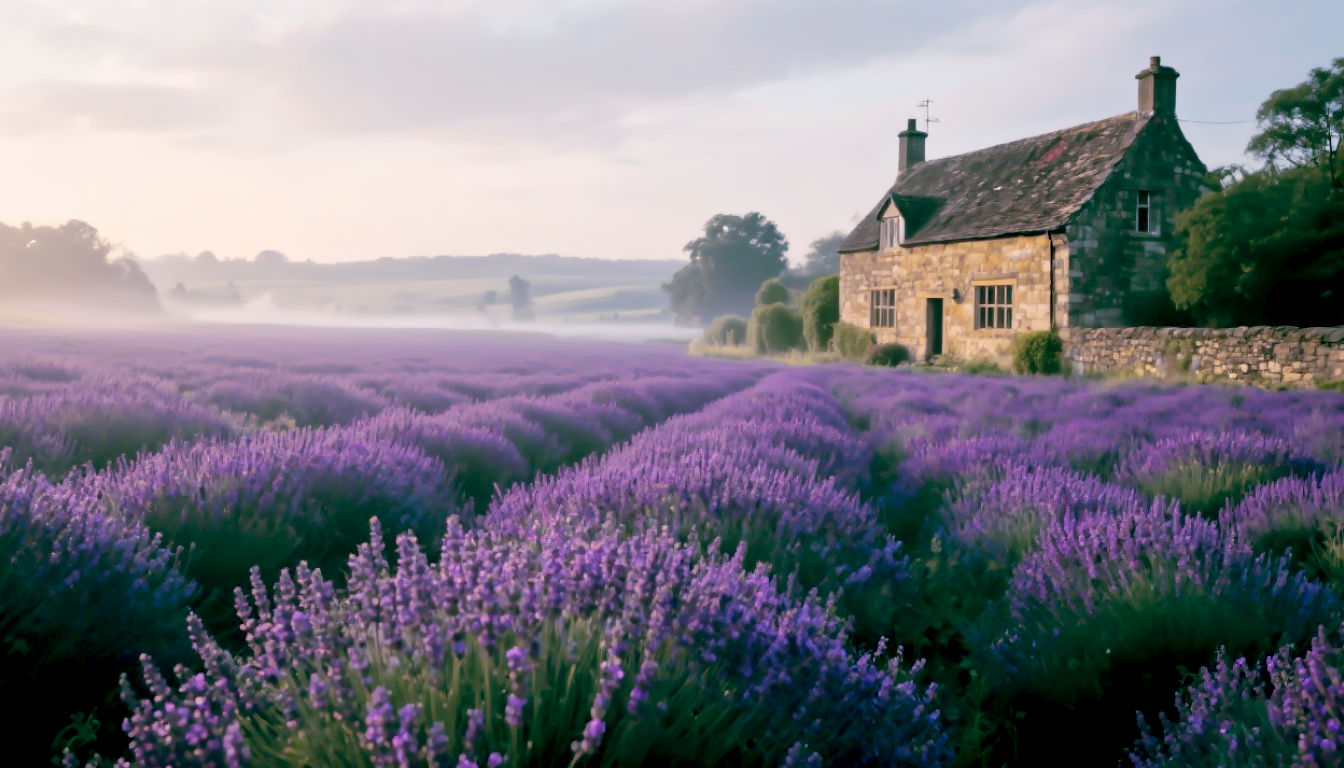
This post may contain affiliate links. If you make a purchase through these links, we may earn a commission at no additional cost to you.
When you think of a quintessential British summer, what comes to mind? Perhaps the gentle thwack of a cricket bat, a sudden downpour, or the sight of rolling hills. For many, it’s the rich, purple haze of a lavender field, humming with the buzz of contented bees under a warm, golden sky. Lavender isn’t just a plant; it’s a sensory experience, a historical touchstone, and a steadfast hero of our gardens.
While it may seem as British as a cup of tea, this fragrant powerhouse has a fascinating story that spans continents and centuries. It’s a plant that has charmed everyone from Roman soldiers to Tudor queens and modern-day gardeners. But to unlock its full potential, from its soothing scent to its culinary magic, you need to understand its secrets. This guide will walk you through everything you need to know, transforming you from a casual admirer into a confident cultivator of this remarkable plant.
The Lavender Lineage: A Botanical Introduction
Before you can grow it, it’s worth getting to know the plant itself. Lavender is part of a large and diverse family, and its journey to becoming a staple of British gardens is a tale of empire, medicine, and sheer botanical beauty.
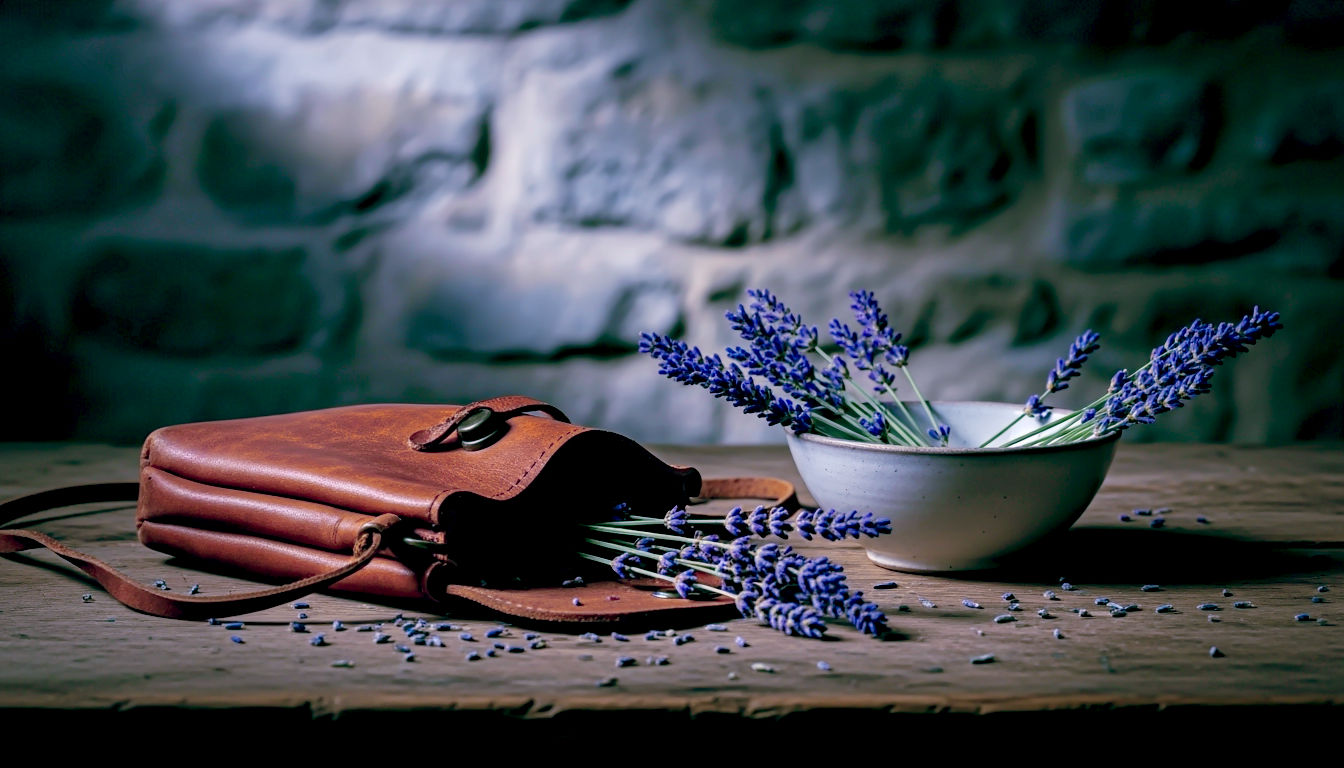
A Journey Through Time: From Roman Baths to Modern Britain
The story of lavender in Britain is believed to have begun with the Romans. As they expanded their empire, they brought with them a passion for cleanliness and a practical knowledge of herbs. The name “lavender” itself is thought to come from the Latin word lavare, which means “to wash.” Roman soldiers and citizens used the plant to scent their bathwater and to dress wounds, thanks to its antiseptic properties.
After the Romans left, the plant’s use in Britain seems to have faded somewhat, only to be revived in medieval monasteries. Here, monks grew a wide array of medicinal herbs in their “physick” gardens, and lavender was a key player. It was a time when herbal remedies were the only form of medicine, and its soothing and healing qualities were highly valued.
By the Tudor and Stuart eras, lavender was firmly back in favour. Queen Elizabeth I was a big fan, using it to treat migraines and as a perfume. During the Great Plague of 1665, people believed that burning lavender would cleanse the air and ward off infection. Herb women would sell bunches of it on the streets of London, and the price of the fragrant herb would rocket during such desperate times. A famous tale tells of four thieves who plundered plague victims while wearing a concoction of herbs, including lavender, which they believed protected them.
The plant’s popularity reached its peak in the Victorian era, when it became a symbol of cleanliness and elegance. Lavender water and sachets were commonplace, used to scent linen and clothes. Commercial lavender farms began to appear, especially in areas with suitable soil and climate. Hitchin in Hertfordshire, for example, became one of the country’s major lavender-growing regions in the 16th century, and the tradition was kept alive by pharmacists and growers like William Ransom, who even presented a bottle of essential oil to Queen Victoria herself.
The Family Tree: Understanding the Types of Lavender
When you pop to the garden centre, you’ll see a lot of different kinds of lavender. But for a British gardener, a few key types are far more important than others. The main difference comes down to hardiness and a slightly different scent profile.
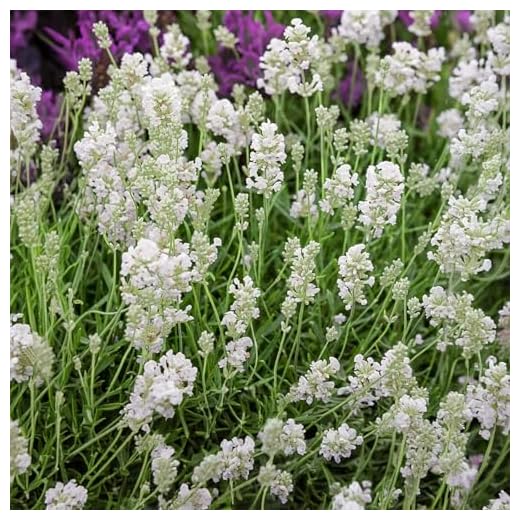
English Lavender (Lavandula angustifolia)
It’s the hardiest of the bunch, coping well with cold winters, and has a sweet, floral aroma with no hint of camphor, making it the top choice for culinary uses. Common varieties you’ll see in the UK are ‘Hidcote’ and ‘Munstead’, which are a doddle to grow and perfect for low hedges or borders.

Lavandin (Lavandula x intermedia)
This is a hybrid, a natural cross between Lavandula angustifolia and Lavandula latifolia (Spike Lavender). These plants are generally larger, with longer stems and bigger flowers, making them a great choice for creating a striking visual impact. They’re also brilliant for producing essential oil, as they yield a lot more than their English cousins. The downside? Their scent has a slightly more medicinal, camphorous note, so they aren’t ideal for cooking.
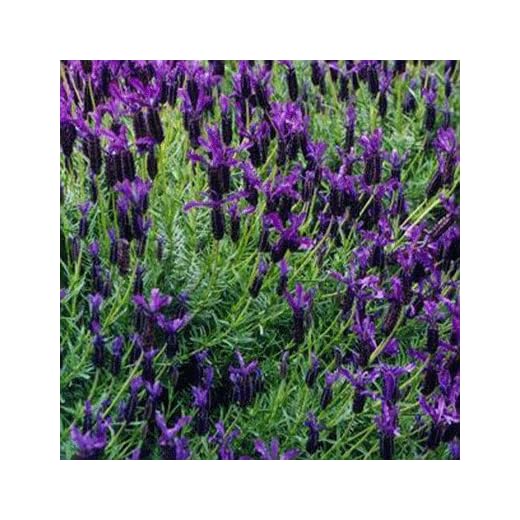
French/Spanish Lavender (Lavandula stoechas)
You’ll recognise these by their quirky “bunny ear” tufts on top of the flower spikes. They look absolutely gorgeous, but they’re a bit more high-maintenance for the average UK gardener. They’re less hardy and don’t like frost, so they’re best treated as annuals or grown in pots that can be moved into a greenhouse or a frost-free shed for the winter.
Choosing the right kind of lavender is the first, and most important, step to success. For most of us, sticking to the tried and tested English varieties is the best bet for a happy, long-lived plant.
Cultivating the Hardy Hero: A Practical British Gardening Guide
Growing lavender in Britain can be a piece of cake if you know what you’re doing. The secret is to think like a Mediterranean plant and give it what it wants: lots of sun and a dry bottom. Forget what you know about many other plants; lavender is a fan of poor, lean soil and a bit of neglect.
Choosing Your Spot: Sun, Soil, and Drainage
Lavender’s number one desire is sunshine. It needs at least six to eight hours of direct sun a day. A south-facing wall or a spot in the middle of a sunny border is perfect. Without enough sun, your plant will get leggy, won’t flower as well, and will be more prone to disease.
When it comes to soil, think dry and free-draining. Lavenders hail from rocky, dry, and often alkaline soils. This is key. The biggest killer of lavender plants in the UK is a heavy, wet soil, especially over the damp winter months. If you have a clay soil that holds onto water, you’ve got two main options:
- Improve the soil: Dig in plenty of horticultural grit, sand, or gravel to improve drainage. You can also plant on a slight mound or ridge, about 20-30cm high, to help the water run away from the roots.
- Grow in a container: This is an excellent solution. Choose a terracotta pot with big drainage holes. Use a mix of multipurpose or loam-based compost and mix in a generous amount of coarse grit—up to a quarter of the volume—to ensure it drains like a sieve.
Planting Perfection: Getting It Right First Time
Whether in the ground or a pot, the planting process is straightforward. Dig a hole twice as wide as the plant’s rootball and plant it at the same depth it was in its pot. If you’re planting a hedge, space the plants about 30cm apart for smaller varieties like ‘Munstead’ or 45cm for larger ones.
After planting, give it a good drink of water to help it settle in. But after that, hold off. Newly planted lavender needs regular watering during its first summer to establish itself, but once it’s settled in, it’s remarkably drought-tolerant. You’ll rarely need to water a lavender plant in the ground unless we’re having a seriously long, dry spell. Potted lavenders, however, will need more attention, as they can dry out much quicker. A good rule of thumb is to stick your finger an inch or two into the compost—if it’s dry, give it a drink.
The Pruning Puzzle: When and How to Snip for Success
Pruning is probably the most important part of keeping your lavender happy and healthy. The most common mistake gardeners make is not pruning enough. Neglected plants become woody, leggy, and unproductive.
- When to prune: The best time to give your plant a good chop is right after it has finished flowering. For most English varieties, this will be in late August or early September. The goal is to trim it back before the weather gets cold and wet.
- How to prune:
- The deadheading snip: Once the flowers start to fade, you can snip off the spent flower heads. This encourages the plant to put its energy into new growth rather than seed production.
- The big cut: This is the important bit. Use a pair of sharp secateurs or shears and cut the plant back by about a third, or even up to two-thirds. The golden rule is to always cut into green, leafy growth and never into the old, woody base of the plant. Cutting into the old wood can kill the plant, as it often won’t produce new shoots from there.
- The ‘three eights’ rule: A brilliant tip for hedges is the ‘three eights’ rule: in the eighth month (August), reduce the height and width of your lavender hedge to eight inches. This is a bit of a rough guide, but it works wonderfully.
Pest Patrol and Disease Defence
Happily, lavender is a relatively trouble-free plant, and it’s even known for deterring some pests. However, it’s not invincible.
- Root Rot and Crown Rot: These are the most common issues, and they’re almost always caused by a single thing: poor drainage. Too much water, especially in cold, heavy soil, suffocates the roots and a fungal infection sets in. The plant will suddenly wilt and look unhappy. The best cure is prevention. Make sure your soil drains well and don’t overwater.
- Cuckoo Spit: This is a frothy white substance that appears on the stems. Inside is a small insect called a froghopper nymph. It’s harmless to the plant, if a bit unsightly. A quick blast with a hosepipe will wash it away.
- Shab: A rare but serious fungal infection that causes shoots to wilt and turn brown. There is no cure; if you spot it, you must dig up and safely dispose of the plant immediately to prevent it spreading.
Beyond the Bed: Putting Your Lavender to Work
Once you have a flourishing lavender plant, you’ll be able to reap the rewards of your hard work. There’s so much more to it than just a pretty face in the garden.

Culinary Creations: From Herb Garden to Kitchen
The sweet, floral taste of English lavender (Lavandula angustifolia) can add an unexpected and sophisticated twist to your cooking. It works best with sweet and acidic fruits like lemons, plums, and rhubarb, but can also be used to add a subtle lift to savoury dishes.
- Lavender Sugar: A simple and effective way to infuse your baking. Take some dried culinary lavender buds and grind them with granulated sugar. Store it in a jar and use it in cakes, biscuits, or sprinkled over scones.
- Lavender Biscuits or Shortbread: The delicate flavour works perfectly with the buttery richness of a good shortbread. Just add a teaspoon of finely chopped lavender buds to your mixture.
- Savoury Dishes: Try adding a little lavender to a rub for roast lamb or chicken. It’s a fantastic partner for herbs like rosemary, thyme, and sage.
The Power of Scent: Essential Oils and Aromatherapy
The fragrance of lavender is legendary for a reason. Its calming properties have been used for centuries to reduce stress and promote relaxation. The scent is primarily due to a couple of compounds: linalool and linalyl acetate, which are believed to interact with the brain’s limbic system to produce sedative effects.
- Inhalation: You can simply crush the flowers between your fingers to release the scent, or use a diffuser with lavender essential oil. A few drops on your pillow at night can help with a good night’s sleep.
- Bathing: Add a few drops of pure lavender essential oil to a warm bath to create a tranquil, spa-like experience.
- Homemade Products: You can make your own lavender bags for your linen cupboards, or infuse oil to create a soothing massage oil.
Home and Garden Hacks
Lavender’s uses extend beyond the kitchen and the bathroom. It’s a multi-purpose workhorse.
- Natural Pest Repellent: Moths, fleas, and mosquitoes all dislike the smell of lavender. Place sachets in your wardrobe to keep moths at bay, or rub the flowers on your skin as a natural insect repellent.
- Potpourri: Dried lavender flowers retain their scent for a long time, making them a perfect base for homemade potpourri. Mix them with other dried flowers and spices for a beautiful, natural air freshener.
The Lavender Legacy: Culture, Economy, and Future
From ancient remedy to modern-day super-plant, lavender’s story is far from over. Today, it’s not just in our gardens; it’s a part of our landscape and economy.
A British Love Affair
The sight of a lavender field in full bloom has become a magnet for tourists and a symbol of British summer. Lavender farms like the one in Norfolk or the Cotswolds have been instrumental in this revival. These aren’t just commercial operations; they’re tourist destinations where people can walk through the fragrant rows, see the distillation process, and buy locally made products. This has cemented lavender’s place not just in our gardens, but in our collective national consciousness. It’s become as much a part of the rural idyll as thatched cottages and dry stone walls.
The Future of Fragrance: Sustainability and Trends
In a world increasingly focused on natural and sustainable products, lavender is enjoying a huge surge in popularity. Its low-maintenance nature and drought tolerance make it a perfect choice for gardeners worried about water conservation. It’s also fantastic for pollinators, attracting bees, butterflies, and other beneficial insects to the garden, which is vital for the health of our ecosystem.
As we look to the future, lavender will likely remain a star of our gardens and a staple in our homes. Whether it’s for its beautiful colour, its soothing scent, or its practical uses, this hardy hero has earned its place as a cherished part of the British landscape. It’s a plant that connects us to our past while providing a sustainable, beautiful solution for the future. So, go on, plant a little lavender. You won’t regret it.
Further Reading
- Royal Horticultural Society (RHS): A highly respected source for all gardening advice, with detailed profiles and guides on countless plants.
- Norfolk Lavender: One of Britain’s oldest lavender farms, their website offers a wealth of information on their history and growing techniques.
- The National Trust: Their gardens often feature stunning lavender displays, and their articles provide insight into historical planting.
- BBC Gardeners’ World: A trusted resource for British gardeners, offering practical tips and seasonal advice.
- Kew Gardens: The Royal Botanic Gardens provide authoritative information on plant species and their cultivation.





